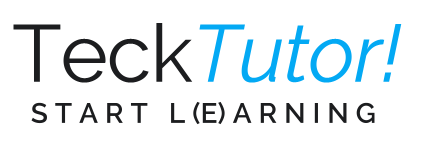How To Promote Affiliate Links On LinkedIn in 2025
Affiliate marketing continues to evolve, and as we step into 2025, LinkedIn is emerging as a powerful platform for professionals and marketers to drive affiliate sales. Read more about How To Promote Affiliate Links On LinkedIn in 2025!
- Click here if you are looking for Amazon Affiliate Marketing Course in Hindi
- Checkout 80% Success Rate of Students for Digital Marketing Course
How To Promote Affiliate Links On LinkedIn in 2025
So as per this How To Promote Affiliate Links On LinkedIn in 2025 article, Affiliate marketing continues to evolve, and as we step into 2025, LinkedIn is emerging as a powerful platform for professionals and marketers to drive affiliate sales.
With over 900 million users worldwide, LinkedIn offers a unique environment for connecting with a niche, highly engaged audience.
In this How To Promote Affiliate Links On LinkedIn in 2025 guide, we will explore effective strategies to promote affiliate links on LinkedIn and maximize your affiliate marketing efforts.
Why Use LinkedIn for Affiliate Marketing?
So based on this How To Promote Affiliate Links On LinkedIn in 2025 article, LinkedIn stands out from other social media platforms due to its professional environment, making it ideal for B2B marketing and high-value affiliate programs. Here are some reasons to leverage LinkedIn for affiliate marketing:
- Targeted Audience: LinkedIn allows you to connect with professionals, business owners, and decision-makers who are more likely to invest in premium products and services.
- High Engagement: The platform’s users are actively seeking knowledge, solutions, and tools to advance their careers or businesses.
- Trust and Credibility: By building a professional presence on LinkedIn, you can establish yourself as an expert, making it easier to promote affiliate products.
Step-by-Step Guide to Promoting Affiliate Links on LinkedIn
1. Optimize Your LinkedIn Profile
So as guided in this How To Promote Affiliate Links On LinkedIn in 2025 article, Your LinkedIn profile is your virtual storefront. Ensure it represents your brand and inspires trust.
- Professional Photo: Use a high-quality, professional headshot.
- Compelling Headline: Include keywords related to affiliate marketing and the niche you’re targeting. For example, “Helping Businesses Grow with the Best Tools | Affiliate Marketing Specialist.”
- Engaging Summary: Highlight your expertise, the value you provide, and a subtle mention of the products or services you promote. Add a link to your blog or landing page.
2. Join and Engage in LinkedIn Groups
So according to this How To Promote Affiliate Links On LinkedIn in 2025 article, LinkedIn Groups are goldmines for affiliate marketers. They allow you to engage with a targeted audience interested in your niche.
- Find Relevant Groups: Search for groups related to your affiliate niche, such as “Digital Marketing Tools” or “Health and Wellness Professionals.”
- Provide Value: Share insights, answer questions, and participate in discussions. Avoid spamming affiliate links directly; instead, build trust first.
- Subtle Promotion: Once you’ve established credibility, share blog posts, guides, or case studies that include affiliate links naturally.
3. Create High-Value Content
So considering this How To Promote Affiliate Links On LinkedIn in 2025 article, Content is king, even on LinkedIn. Create and share content that resonates with your audience and subtly promotes affiliate products.
- Types of Content to Share:
- LinkedIn Articles: Write in-depth articles about how a product or service solves a common problem.
- Posts with Tips: Share short, actionable tips related to your niche, ending with a CTA to check out your affiliate product.
- Infographics and Videos: Visual content often performs better. Create engaging videos demonstrating the benefits of a product.
- Include Links Strategically: Avoid placing affiliate links directly in posts. Instead, link to your blog or a resource page where the affiliate link is embedded.
4. Leverage LinkedIn Ads
LinkedIn Ads are an excellent way to boost visibility for your affiliate products, especially if they target professionals or businesses.
- Types of Ads to Use:
- Sponsored Content: Promote blog posts or landing pages with affiliate links.
- Text Ads: Use concise, compelling text to drive clicks to your affiliate landing page.
- Message Ads: Send personalized messages to your audience, offering value and including affiliate links subtly.
- Targeting Options: Use LinkedIn’s advanced targeting to focus on specific industries, job titles, or companies that align with your affiliate niche.
5. Build a High-Converting LinkedIn Network
Your network plays a crucial role in the success of your affiliate marketing on LinkedIn.
- Connect Strategically: Send connection requests to professionals and businesses within your niche. Personalize each request with a friendly note.
- Engage Regularly: Like, comment, and share posts from your network to stay visible and foster relationships.
- Use DMs Wisely: Once you’ve built rapport, share valuable resources that include affiliate links. For example:
“Hi [Name], I came across this tool that has helped me [specific result]. Here’s a guide that explains how to use it effectively: [Link]. Let me know your thoughts!”
6. Host Webinars and Live Events
Webinars and live events are powerful tools for educating your audience while promoting affiliate products.
- Topic Ideas: Choose topics that solve a problem for your audience, such as “5 Tools to Streamline Your Business Operations.”
- Subtle Promotion: Introduce affiliate products during the webinar as solutions to challenges your audience faces.
- Follow-Up: Send attendees a thank-you email with a recap and include affiliate links.
7. Analyze and Optimize Performance
To ensure your efforts yield results, track and analyze your performance regularly.
- Metrics to Monitor:
- Click-through rates (CTR) on affiliate links.
- Engagement metrics on LinkedIn posts (likes, shares, comments).
- Conversion rates from LinkedIn traffic.
- Tools to Use: Use tools like Google Analytics, Bitly, or LinkedIn Insights Tag to measure performance.
- Optimize Based on Data: If a particular post or strategy performs well, double down on it. Experiment with different content formats and CTAs to improve results.
Do’s and Don’ts of Promoting Affiliate Links on LinkedIn
Do’s:
- Provide value before promoting.
- Be transparent about affiliate links.
- Build genuine relationships.
- Focus on high-quality, relevant products.
Don’ts:
- Spam your links in comments or messages.
- Promote irrelevant or low-quality products.
- Neglect your profile’s professionalism.
- Ignore LinkedIn’s terms of service regarding promotional activities.
FAQs: How to Succeed in Affiliate Marketing on LinkedIn
Q: Can you directly share affiliate links on LinkedIn?
A: While it’s technically allowed, it’s more effective to embed links within valuable content like blog posts or landing pages.
Q: What niches work best for LinkedIn affiliate marketing?
A: B2B niches such as software tools, online courses, productivity apps, and professional services perform exceptionally well.
Q: How often should I post on LinkedIn?
A: Aim for consistency—post 3-5 times a week, balancing promotional and non-promotional content.
Unlocking the Potential of LinkedIn for Affiliate Marketing in 2025
As we venture into 2025, LinkedIn is proving to be a game-changing platform for affiliate marketers. Its professional environment, targeted audience, and robust networking features make it a fertile ground for promoting affiliate links effectively.
However, success on LinkedIn requires a nuanced and strategic approach, focusing on delivering value, building trust, and leveraging the platform’s unique tools.
One of the most critical aspects of affiliate marketing on LinkedIn is optimizing your profile. Your profile acts as your digital storefront, showcasing your expertise and building trust with your audience.
A professional photo, a compelling headline, and an engaging summary that subtly mentions your affiliate marketing efforts can go a long way in establishing credibility.
Content creation is another cornerstone of success on LinkedIn. Unlike other social media platforms, LinkedIn thrives on thoughtful, professional, and high-value content.
Whether through LinkedIn articles, posts, videos, or infographics, sharing insights and actionable advice helps you position yourself as an authority in your niche. This approach not only drives engagement but also creates opportunities for subtly embedding affiliate links within valuable resources.
LinkedIn Groups offer a unique way to engage with niche audiences. By joining relevant groups and contributing meaningful insights, you can build connections and establish yourself as a trusted voice.
Once credibility is established, you can naturally introduce affiliate products that align with the group’s interests and needs. Similarly, webinars and live events provide an excellent avenue for promoting affiliate products. By addressing specific challenges and offering solutions, you can effectively highlight the benefits of the tools or services you are affiliated with.
For those looking to scale their efforts, LinkedIn Ads are a powerful option. Sponsored content, text ads, and message ads allow you to target specific audiences, ensuring your affiliate products reach the right people. However, ads should always direct users to high-value content or landing pages, not just affiliate links, to maintain professionalism and trust.
Building a high-converting network on LinkedIn is essential. Unlike platforms that prioritize mass reach, LinkedIn is about quality over quantity.
Focus on connecting with professionals and businesses that align with your niche, engaging with their content, and nurturing relationships. Once rapport is established, direct messaging can be an effective tool to introduce affiliate products in a non-intrusive manner.
Finally, no strategy is complete without performance tracking and optimization. Regularly analyze key metrics such as click-through rates, conversions, and post engagement to identify what works best.
By refining your approach based on data, you can maximize your results and stay ahead in the competitive landscape of affiliate marketing.
In summary, promoting affiliate links on LinkedIn in 2025 is about more than just sharing links—it’s about creating meaningful connections, delivering value, and building a professional reputation.
By following the strategies outlined in this guide, you can transform LinkedIn into a powerful channel for affiliate marketing success. Start today, and position yourself as a leader in your niche, reaping the benefits of this untapped opportunity!
Conclusion About How To Promote Affiliate Links On LinkedIn in 2025
Promoting affiliate links on LinkedIn in 2025 requires a strategic approach that prioritizes value and relationships over direct selling. By optimizing your profile, creating engaging content, leveraging LinkedIn’s tools, and building meaningful connections, you can turn LinkedIn into a profitable platform for affiliate marketing. Start implementing these strategies today, and watch your affiliate sales soar! So this concludes the article about How To Promote Affiliate Links On LinkedIn in 2025!

